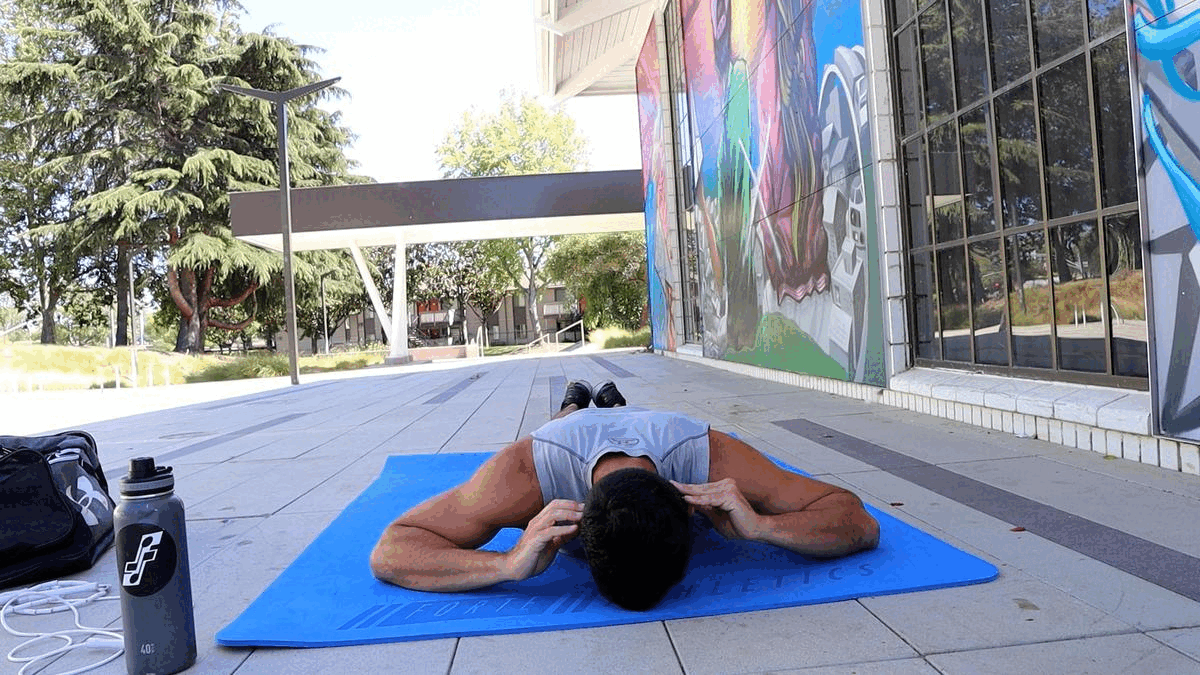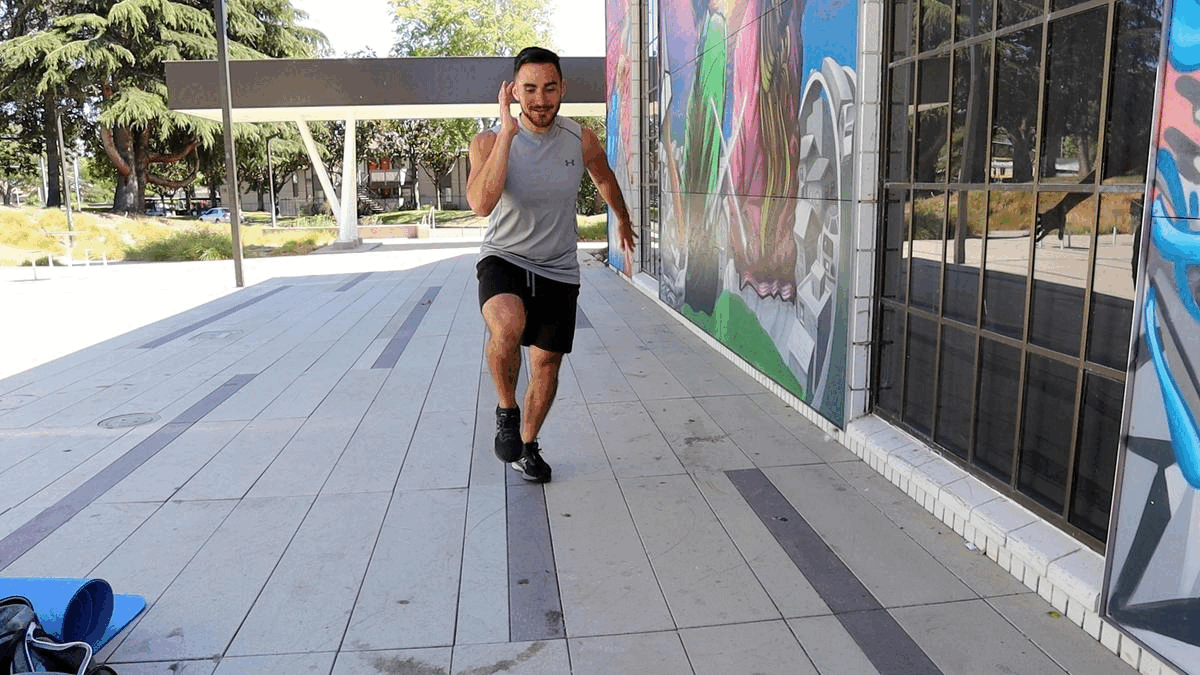Marching in the drumline requires a significant amount of strength to hold the equipment level while performing direction changes at fast tempos. This is NOT easy. Without a proper training program, performers are likely to experience a break down in their posture while moving and playing. Will poor posture and body control lead to the best performance? I don't think so.
If you truly want to thrive and achieve recognition in the drumline, the most important thing to do is to start building strength These are the four most important exercises that I believe every drumline should train.
1) Hollow Body
Low back pain while marching? No thank you. The hollow body is the best exercise for building the strength to keep your drums level & protect your lower back from pain during rehearsal. This exercise strengthens your lower abdomen, which is an underdeveloped muscle in many young performers. Leaning back while marching with a drum on is a clear sign that the performer does not have adequate lower ab strength to support the weight of the equipment.
To perform the hollow body, lie down on your back with your knees tucked towards your chest. Then lift your chest up while reaching towards your feet. Hold for 15-30 seconds. If done correctly, you will feel tension in the lower abs.
Once you feel strong holding for 30 seconds, you're ready to progress! To bump up the intensity, extend one leg straight out while shooting energy all the way through your pointed foot. The tighter your leg is, the stronger you will feel.
As you perform the progression, put a strong focus on hugging your lower ribs down and in towards your pelvis. This will ensure your lower abs stay tight. If your lower ribs start to flare out, this will create an arch in your lower back and is a sign that you don't have adequate strength for that position (or duration) quite yet. Keep practicing, and you'll get there!
As you start training the hollow body, aim for 3 rounds of 10-15 second holds and gradually work your way up to 3 rounds of 30 second holds. Remember to keep that low back flat to the ground!
2) Walking Lunges
These days, body movement is an essential component of marching band performance. Drumline body movement tends to be limited by the equipment, which often leads us towards a split stance position...so we should practice that movement pattern!
Walking lunges are one of the greatest exercises for building strength and stability in a split stance position. Having power in this position will make it easier to stand up from a lunge while wearing equipment, which will give you the appearance of strength and power.
To perform walking lunges, take a big step forward, find your balance, then bend both knees to lower the body towards the ground. Then stand up with your weight on the front leg as you swing your rear leg forward to repeat on the other side.
Your back knee does NOT need to touch the ground, but you should go as deep as you can comfortably go. As your knees bend, focus on maintaining your balance and driving your front knee forward and slightly outwards towards your 2nd & 3rd toe.
As you start training walking lunges, aim for 2 sets of 12-16 steps and gradually work your way up to 6 rounds of 16 steps.
3) Prone Trap Raises
If you want to look strong while performing, your body posture and presence is most important. The shape of the harness and weight of the drums WILL pull your shoulders forward into a rounded position--which shrinks your presence. It is your duty to combat this by strengthening your upper back & shoulder.
Prone trap raises are an excellent exercise to improve posture and presence. They require no equipment and can be done anywhere.
To perform prone trap raises, lie on your stomach with your hands gentle placed behind your ears. Inhale, then lift the elbows and chest up while squeezing the shoulder blades down & back. Slowly exhale while returning to the starting position to complete one rep.
Begin with 2 sets of 12-15 reps. Once that feels strong, progress the exercise by extending your arms out into a "T" position and repeat the exercise. If you can comfortably perform 2 sets of 12-15 reps, progress to arms overhead in a "Y" position. You'll notice a difference in the intensity of each progression. There is no need to rush through the progressions because even the first level produces quite the burn!
4) Lateral Bounds
Sideways marching, aka "Crab walking", is a technique used by drumlines in order to move sideways while keeping the drum squared to the front. This movement happens in the frontal plane and requires strength & power in the hips. You can develop these muscles to make crab walking feel easier by training lateral bounds.
Lateral bounds are a great exercise for building explosive power and stability in the side to side plane--which directly translates into marching.
To perform a lateral bound, start with your feet together. Take a step forward, then dig into the ground with the lead leg and explode to the side, landing on your opposite leg. Retrace your foot steps to return to the starting position & repeat. Focus on explosive power from the floor on your direction change, and stabilizing the body upon landing on the opposite leg.
Begin with 2-3 sets of 20 seconds, gradually working your way up to 40 seconds.
TRY THIS 15 MIN DRUMLINE WORKOUT:
1) Hollow Body, 3 sets of 15 sec holds on both sides.
2) Walking Lunges, 3 sets of 12-16 steps
3) Prone Trap Raises 3 sets of 8-12 reps
4) Lateral Bounds 4 sets of 20 secs on both sides.
Now it's time to take action and go get your reps in. Stay strong, Forte Fam!

_edited.png)



